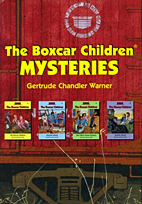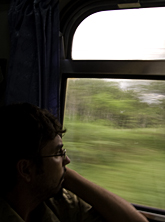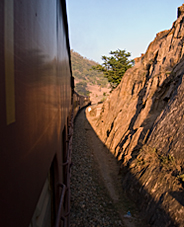No Strangers on a Train
I have a weakness for trains. It doesn’t matter if it’s a subway ride across town or the Trans-Siberian railway, count me in.
 , certainly not the world I grew up in, where there were very few trains.[1]
, certainly not the world I grew up in, where there were very few trains.[1]
Trains are almost totally unknown where I come from. If trains pass through Los Angeles, they don’t do it anywhere near where I lived. When it came to traveling from LA there were two options — get in the car or head to LAX.
And yet trains lurk in the background of most American myths, from Kerouac hopping freight cars in On the Road to the music of Johnny Cash, Merle Haggard, Bob Dylan and countless others. Chances are, if something is hailed as “uniquely American,” then there’s a train in there somewhere.
So how does a culture end up with a mythology built around something most of us have never experienced in any way?
The answer lies more in what trains represent than their practical reality. Rail travel taps into a very primal part of the American imagination — that we’re all free. And by free I think we mean the idea that there is still some untapped thing out there that we can, at any moment, propel ourselves toward.
It’s part of the belief that there is freedom in travel — the way parallel tracks converge in the distance offers the promise of the infinite, toward which we are always running.
That’s why the mythology of trains is tied up in that of nomadic wanderers. The train-riding hobos of old are the modern vagabonds’ spiritual predecessors; travelers who, like the hobos of pop mythology, place more value on the freedom of movement than the accumulation of things (there’s also the similarity in bathing habits, but hey, you have to take the bad with the good).
I didn’t spend any real time on trains until I got to India, where I spent nearly all my time on trains.
 My overwhelming memory of India is the Indian railway system, which is simultaneously the most mind-boggling complex thing I have encountered,[2] and also the coolest, most convenient and downright fun way to travel.
My overwhelming memory of India is the Indian railway system, which is simultaneously the most mind-boggling complex thing I have encountered,[2] and also the coolest, most convenient and downright fun way to travel.
My best memories of India are sitting on the steps of an Indian train car, feeling the rush of air, the thousand foreign smells, watching the scenery pass, from the red mud jungles of the south to the dry barren deserts of Rajasthan. In all I traveled nearly a thousand miles by train in India (and saw no less than four major bus wrecks from the comfort of my train car, which gave me additional motivation to stick to trains).
The train system is the life blood of India, not only is it the single largest employer in the world, it’s how the country moves.
The vast majority of the Indians I met were fellow rail passengers. The secret is to always travel second class. First is too segregated, you don’t meet anyone but army officers and fellow backpackers. Third class is standing room only and generally too crowded to move. Second class is just right.
In second class train cars I met Indians from all walks of life, from the cobbler’s family that asked me to babysit their children and offered me the best samosas I’ve ever had, to the two teenage aspiring rappers who gave me a full day tour of New Delhi when we arrived.
 Indian trains offer something I’ve rarely found in America — organic community travel.
Indian trains offer something I’ve rarely found in America — organic community travel.
In the west especially, a community of travelers has become little more than businessmen drinking at the Holiday Inn Express bar, or backpackers smoking in some dingy flophouse, or worse, the online communities we mistake for genuine connections between people.[3]
Trains have become one of the last real manifestations of our longing for something more — some shared group travel experience that is almost totally lost in American culture.
I think in the end that’s why we mythologize trains, because they harken back to an age of community travel, a real, tangible community of travelers, not just backpackers, but people from all walks of life, people traveling near and far together in a shared space that isn’t locked down like an airplane and isn’t isolated like a car; it’s a shared travel experience and there are precious few of those left in our world.
-
1. I do remember once as a child taking the train from Santa Ana to San Juan Capistrano to see the swallows, or perhaps the monarch butterflies, that part is hazy, but the train ride I am certain of.↩
-
2. The single best resource for deciphering train travel and the complexities of timetables is undoubtedly the wonderful Seat 61 website.↩
-
3. Old man internet joke: what’s the difference between a 1998 BBS and Facebook? Ten years of rationalizing our isolation.↩
Thoughts?
Please leave a reply:
All comments are moderated, so you won’t see it right away. And please remember Kurt Vonnegut's rule: “god damn it, you’ve got to be kind.” You can use Markdown or HTML to format your comments. The allowed tags are
<b>, <i>, <em>, <strong>, <a>. To create a new paragraph hit return twice.